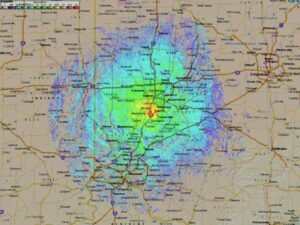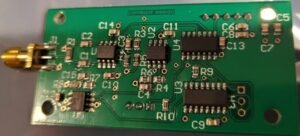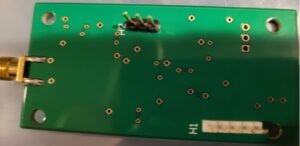This page has miscellaneous ham radio and RF resources.
Lightning Protection:
At this year’s (2024) Hamvention I and two other hams did the session on Lightning Protection with some RFI tips. Turns out Hamvention recorded it and posted it to YouTube (link below). Although it is focused on towers, some of the material is valid for any house or business.
YouTube: Lightning Protection for antenna towers and homes
On Friday January 5, 2018 I did a presentation at the Dayton Amateur Radio Association (DARA) titled “Basic Lightning Protection for Communications Towers”. The links used in the presentation are at:
DARA Thursday Night Group (TNG) Meeting
To see how I envision ground (this link is for a PWB, but same applies to ground around your house), see: Ground Matrix
For lightning protection best resources are Polyphasers book (search for it as it moves around) and the ARRL Handbook. The ARRL Handbook contains good electrical safety information for the amateur radio operator as well. Links:
ARRL Handbook on Bonding and Grounding
A spreadsheet to calculate resistance to ground for ground rods of varying lengths and diameters along with varying soil resistance. Download the file at this link (use at your own risk):
Coax Cable Specification Spreadsheet for Ham Radio
I moved this content to: https://www.trc.guru/miscellaneous/coax-specifications/
Ferrites
To learn about Ferrites go to YouTube and do a search for Fair-Rite. You should not buy Ferrites at Hamfests unless the vendor can identify what material it is. Without knowing what material it is, you will not know if it will work for the frequency that you need a ferrite for. Fair-Rite has a chart at: https://fair-rite.com/materials/
Repeater Performance:
My amateur radio call sign is WB8VSU. There is a UHF repeater running under my call sign (club repeater) in Miamisburg. For the Dayton Hamvention location at the Green County Fairgrounds, there should be coverage for HT ‘s as long as you are using a single band HT. The obvious reason is all the RF in the area of the Hamvention location defenses the dual band / wide band HT’ s. Single band HTs are more immune to the defense.
Here is a link to what the repeaters coverage area is which was created from Radio Mobile for a 35 watt mobile with a 5 dBi gain antenna:

My Repeaters photos website (WB8VSU):
https://www.flickr.com/photos/daytonirlp/
Antenna Reference:
To see how easy to make an antenna to use in a emergency situation see, or for a product to fail EMC tests see:
http://www.artscipub.com/simpleton/simp.quickie.asp
WLW Transmitter history:
http://j-hawkins.com/wlw.shtml
For Amateur Radio related items you can email me at my call sign @arrl.net.
Counter Prescaler
Recent I designed a prescaler for the frequency counter I built in 1979. The prescaler has 2 divide by 10 counters and one divide by 100. Which divide by 10 is used is determined by a jumper. Switching between divide by 10 or 100 is selectable. The one divide by 10 works from below 100 KHz up to 50 Mhz. The primary divide by 100, at 0 dBm works from 14 MHz to something over 1 Ghz. The primary divide by 10 only works to 500 MHz. (I have a couple extra, drop me an email if you want one) Here is what it looks like:


